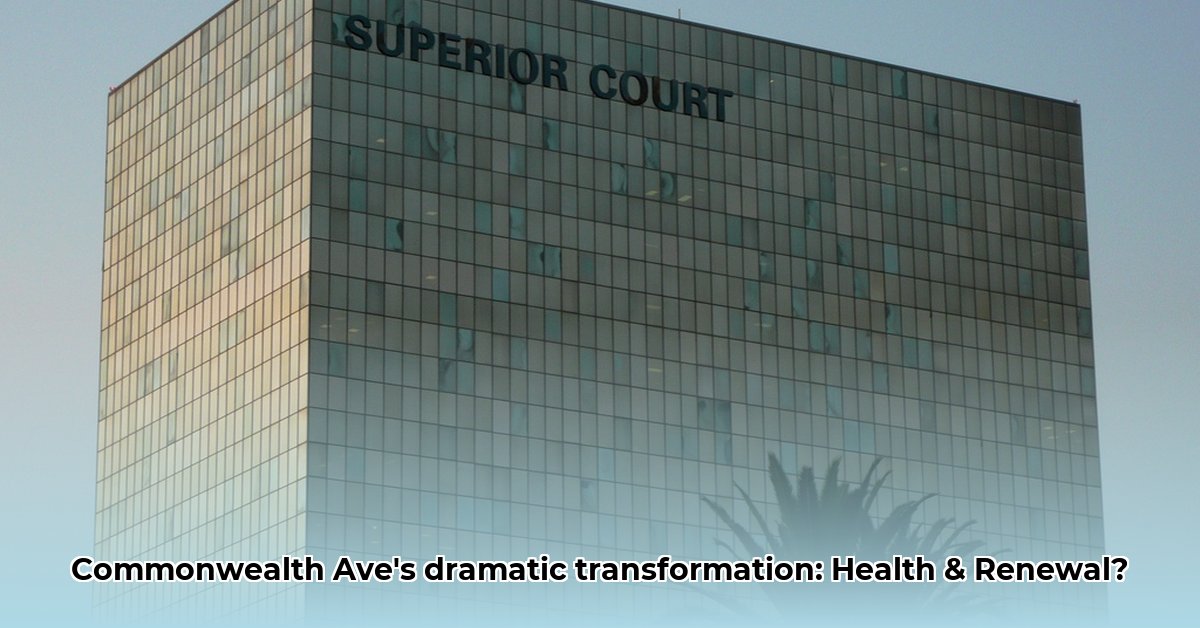
600 S Commonwealth Ave Los Angeles CA: A Neighborhood's Transformation and its Health Impacts
The redevelopment of 600 S Commonwealth Avenue, a former Superior Court office tower in Los Angeles, into residential apartments represents a significant effort to address the city's housing crisis. This conversion, undertaken by Jamison Services, however, presents a complex interplay between urban renewal and public health considerations. This case study analyzes the potential impacts, focusing on the mitigation of associated risks. The project highlights the crucial need for proactive planning, community engagement, and robust regulatory frameworks to ensure that such developments benefit both the city and its residents.
Foreseeing Potential Problems: A Risk Assessment Matrix
Transforming office spaces into residential units, while addressing housing shortages, can strain existing infrastructure and services, including healthcare. Increased population density may elevate the risk of infectious disease transmission, placing a burden on public health resources. This is particularly relevant in Los Angeles, where managing HIV/AIDS and other sexually transmitted infections (STIs) is an ongoing public health challenge. Therefore, a comprehensive risk assessment is essential. A proactive approach, anticipating potential problems and implementing effective mitigation strategies, is crucial to minimize negative impacts.
| Risk Category | Likelihood | Impact | Mitigation Strategies |
|---|---|---|---|
| Strain on Healthcare System | Moderately Likely | Moderately Significant | Increased healthcare capacity planning; proactive collaboration with public health agencies; exploring mobile health clinics. |
| Increased STI/HIV Prevalence | Unlikely, but possible | Moderately Significant | Targeted public health campaigns focusing on prevention and early detection; increased access to testing and treatment; community outreach programs. |
| Construction-Related Health Issues | Relatively Unlikely | Minor | Strict adherence to safety regulations; air quality monitoring; worker safety training and PPE. |
| Gentrification | Moderately Likely | Significant | Affordable housing initiatives integrated into the redevelopment; community engagement to ensure existing residents aren't displaced; job creation programs for local residents. |
This matrix serves as a blueprint for proactive planning, emphasizing the need to address potential risks through strategic interventions.
Stakeholder Responsibilities: A Collaborative Approach
The successful integration of 600 S Commonwealth Ave. into the surrounding community hinges on a collaborative effort among multiple stakeholders. Each party carries a distinct, yet interconnected, responsibility.
Jamison Services (Developer): Beyond construction, the developer must actively engage with the community, assess local healthcare needs, and potentially implement long-term health monitoring for residents. Collaboration with public health experts is critical.
Los Angeles County Public Health Department: This agency plays a vital monitoring role. They are responsible for tracking the project's impact on local STI/HIV rates and designing targeted health interventions, focusing resources on vulnerable populations.
City of Los Angeles Planning Department: The city must incorporate health equity into its approval processes, potentially through updated zoning regulations that incentivize developers to include public health-beneficial elements.
Community Residents: Their active participation, advocating for enhanced healthcare access and participating in community health initiatives, is paramount to ensure the project benefits the neighborhood. This also allows early identification of potential risks and opportunities for preventative measures.
This collaborative model, emphasizing shared responsibility, is essential for maximizing positive outcomes and minimizing negative consequences.
Navigating the Regulatory Landscape: Integrating Public Health Considerations
The redevelopment of 600 S Commonwealth Ave. is subject to various regulations, including building codes, zoning laws, and environmental reviews. However, integrating public health considerations into these regulatory frameworks is crucial. This requires robust coordination between the developer, the City Planning Department, and the County Public Health Department, to ensure the project proceeds while prioritizing community well-being. The coordination of these regulatory aspects is key for success.
Mitigating HIV/AIDS Risk: A Multifaceted Strategy
The concentration of populations in adaptive reuse projects like 600 S Commonwealth Ave. necessitates a proactive approach to mitigating the risk of infectious disease transmission, notably HIV/AIDS. How can we effectively minimize these risks? A multifaceted strategy is needed:
Pre-Renovation Health Assessment: A thorough evaluation of the building's condition to identify and remediate potential health hazards is crucial.
Community Engagement: Collaboration with local health organizations and community leaders to understand existing health needs and vulnerabilities.
Targeted Health Education and Outreach: Providing readily accessible information and access to prevention resources, testing, and treatment services.
Safe Housing Design: Incorporating design elements that promote hygiene and minimize disease transmission opportunities.
Ongoing Public Health Monitoring: Continuous evaluation of the project's impact on public health after occupancy, allowing for necessary adjustments to the mitigation strategies.
This proactive approach ensures that the community benefits from the redevelopment without compromising its health and well-being.
Conclusion: A Balancing Act for a Healthier Future
The 600 S Commonwealth Ave. redevelopment epitomizes the delicate balance between addressing urban needs and safeguarding public health. The successful integration of this project, and future similar endeavors, rests upon proactive planning, collaborative partnerships, and robust regulatory frameworks that place health equity at their core. Ongoing research and community engagement will be essential in assessing the long-term impact of urban renewal projects and improving future strategies.